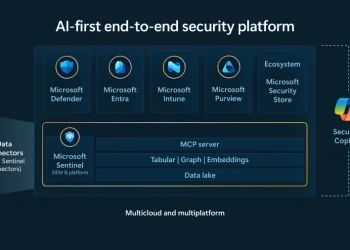A sharply argued blog post by Czech developer and pen-tester Miloslav Homer is drawing attention for its warning about Microsoft dependency risks in enterprise IT. His position, while unlikely to gain favor with Microsoft or its corporate customers, deserves serious attention. Rather than resorting to tired FOSS rhetoric, Homer presents a detailed, numbers-driven case for reducing reliance on Microsoft and other dominant U.S. tech vendors. His article, titled “Microsoft dependency has risks,” highlights how centralization around one company creates vulnerabilities that are often overlooked by decision-makers.
Homer expands on concerns related to digital sovereignty, urging organizations to consider the real-world impact of entrusting core infrastructure to one country’s corporate ecosystem. He examines incidents such as the controversial blocking of International Criminal Court Chief Prosecutor Karim Khan’s email account. While Microsoft denies involvement, the mere possibility of politically motivated interference raises alarms. He also speculates about future U.S. administrations, including the potential return of Donald Trump, and how political volatility could influence access to critical cloud services.
Rather than abstract theorizing, Homer quantifies risk using Return on Security Investment metrics. He compares Microsoft dependency to the 2024 CrowdStrike fiasco, which saw countless Windows systems crash due to a faulty update. That incident caused global disruptions and highlighted the fragility of monoculture IT environments. Homer’s question is simple: what if the U.S. government told Microsoft to cut off service to entire countries or regions? The business impact, according to his estimates, would be enormous.
He points to the global dominance of Microsoft 365 and how few vendors offer Linux systems out of the box. He also notes that most Android users depend on Google accounts, adding another layer of U.S.-centric dependency. Homer’s comparisons are striking. He even cites the fact that there are more mobile phone owners than toothbrush owners, illustrating how deeply tech platforms are embedded into everyday life.
Importantly, he stresses that many IT decisions are made by people who don’t understand what’s at stake. Homer argues that cost-based reasoning, not technical superiority, often drives vendor selection. If software is free, it is frequently dismissed as low value. This mindset reinforces Microsoft’s dominance. Worse, many executives rely on tech advisors who only know the Windows ecosystem. They treat Macs as tolerable simply because they run Office and Teams. Meanwhile, Linux is viewed as a fringe tool for hobbyists.
Homer emphasizes that context matters. Understanding only Microsoft tools gives decision-makers a narrow and dangerous view of the IT world. They believe their current setup is universal, when it’s not. Even in computing, there’s diversity—some machines run on trinary or decimal logic. Homer’s point is that technologists and leaders alike need to widen their lens to see the risks and opportunities more clearly.
He doesn’t just target the clueless C-suite. He also challenges the gatekeeping mindset among senior IT staff who dismiss alternatives out of habit or arrogance. By assigning dollar values to bad assumptions, Homer believes it’s possible to sway risk-averse stakeholders. If you can show how switching tools reduces measurable risk, you may finally reach decision-makers who otherwise reject change out of fear or ignorance.
This debate is not just technical. It is political, economic, and cultural. It asks uncomfortable questions about trust, resilience, and control. Homer’s critique echoes concerns long raised by open-source advocates but repackages them in language suited for the boardroom. That alone makes it worth reading.
Ultimately, Microsoft dependency risks are not a fringe concern. They are central to how modern organizations function. As Homer argues, overreliance on any single vendor—especially one tied to a foreign government—comes with a price. If organizations want to build truly resilient infrastructure, they must confront this dependency head-on, preferably before another global outage or political directive forces their hand.
READ: Windows 11 24H2 Update Now Available for Eligible Devices














